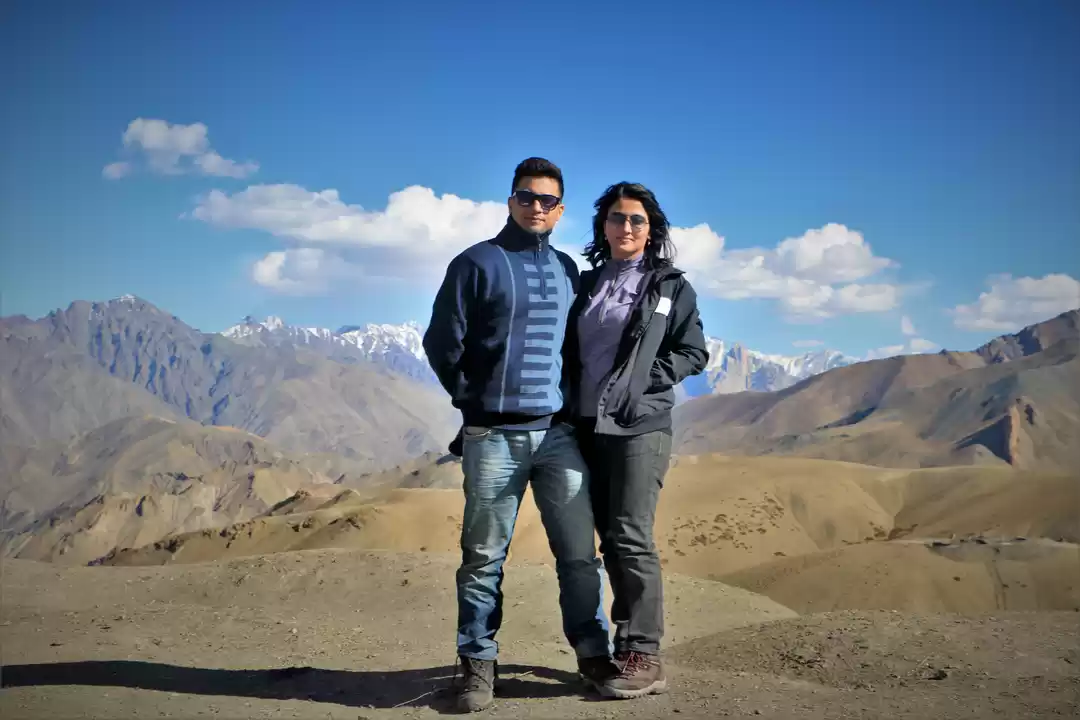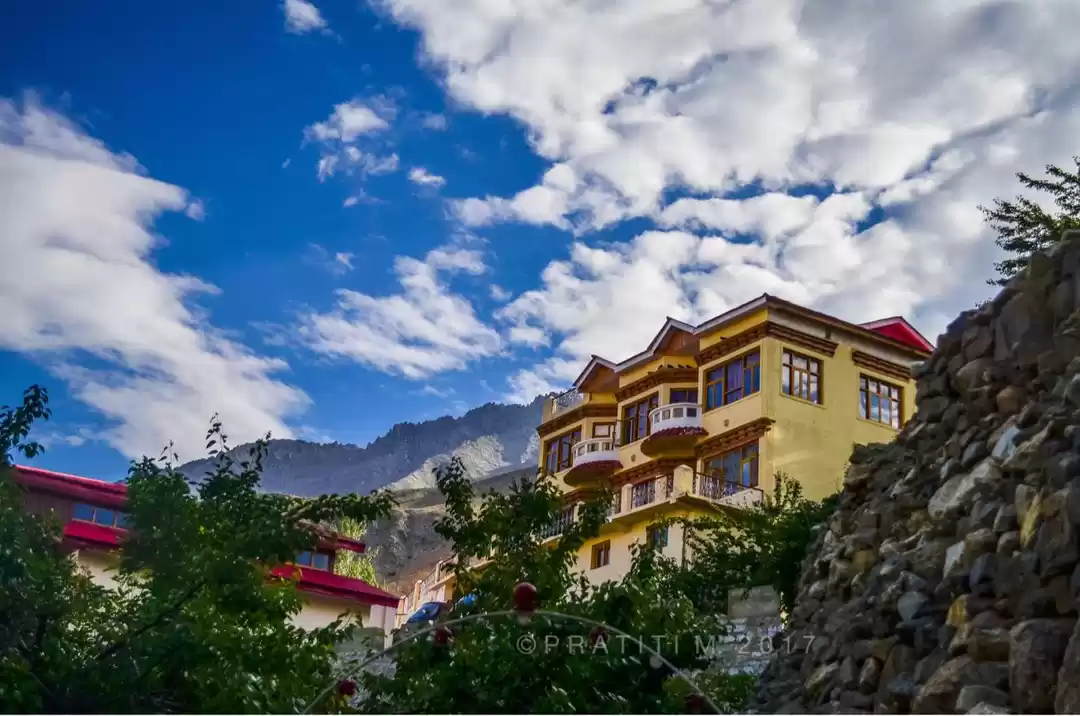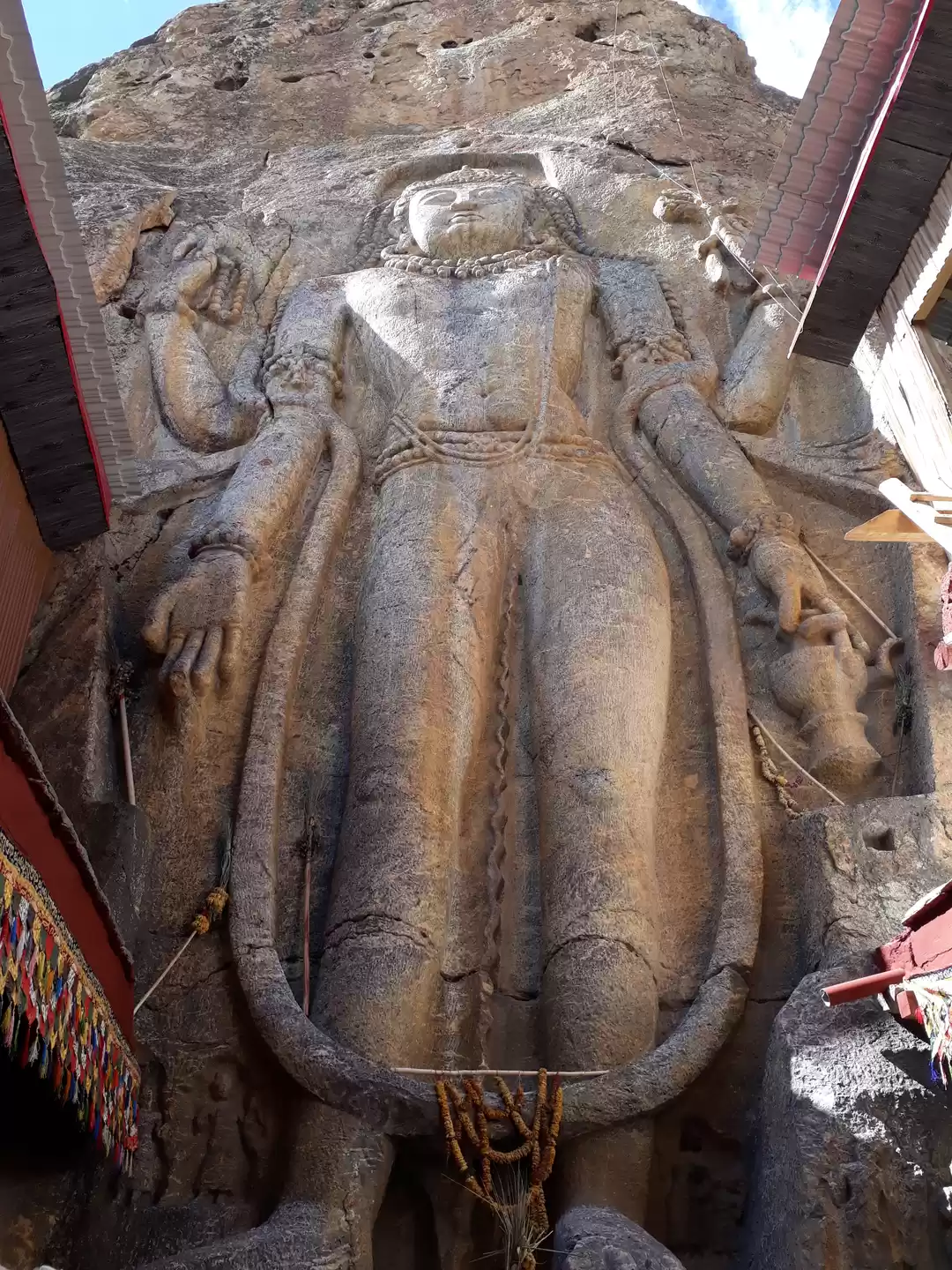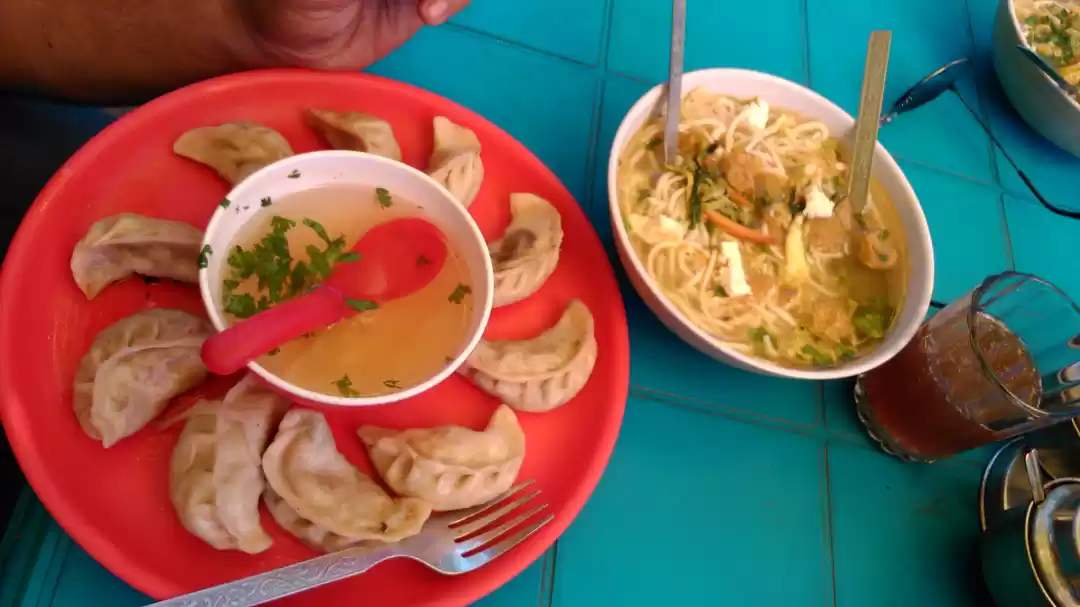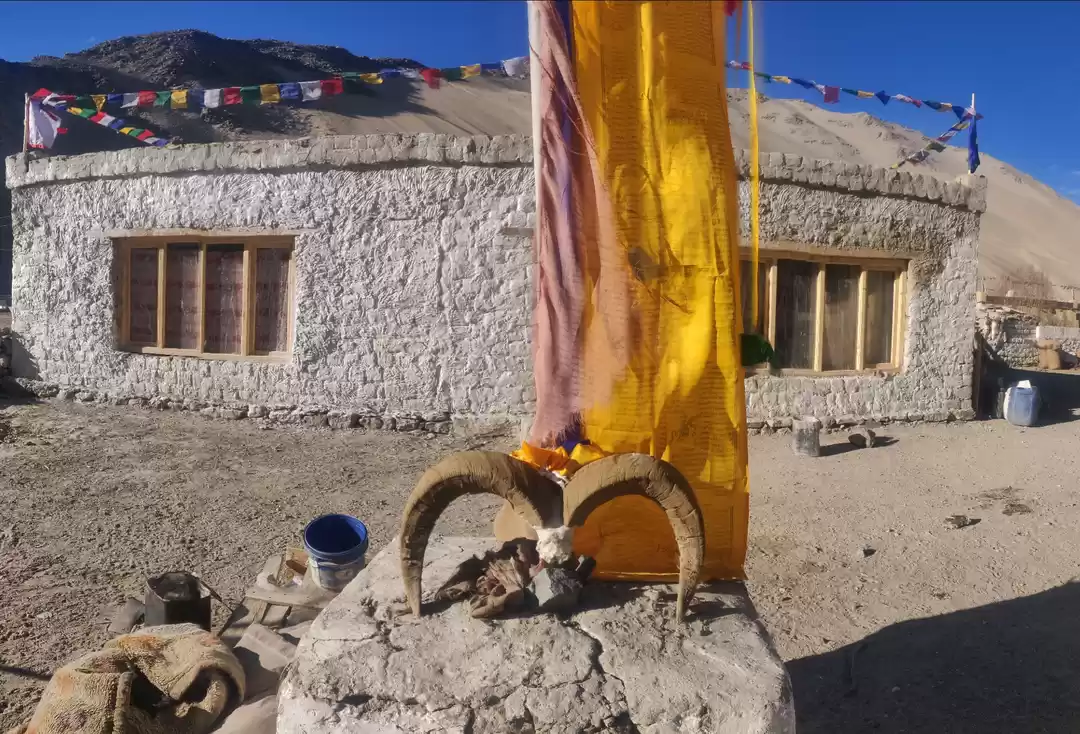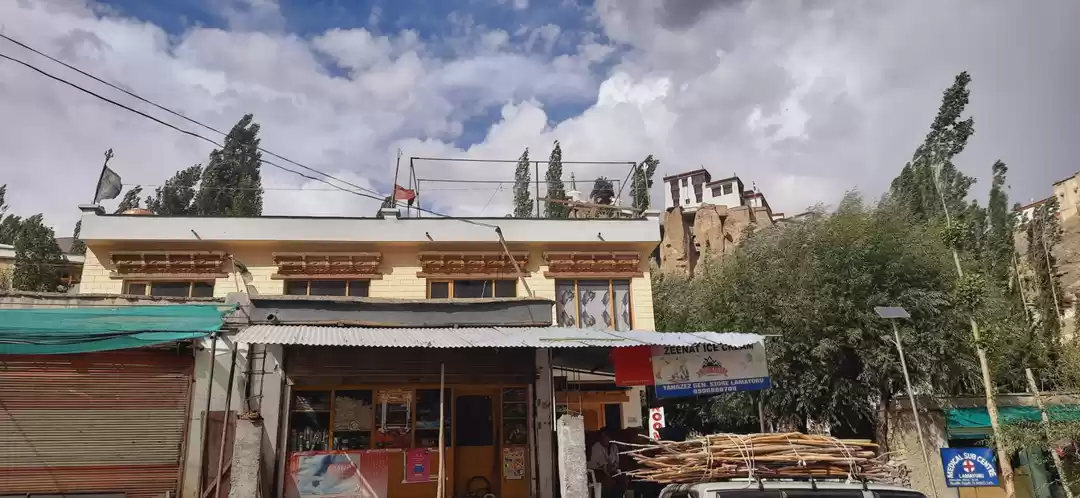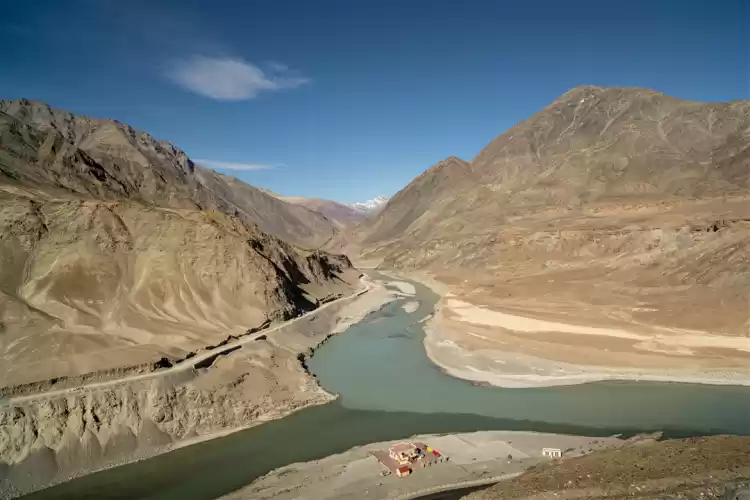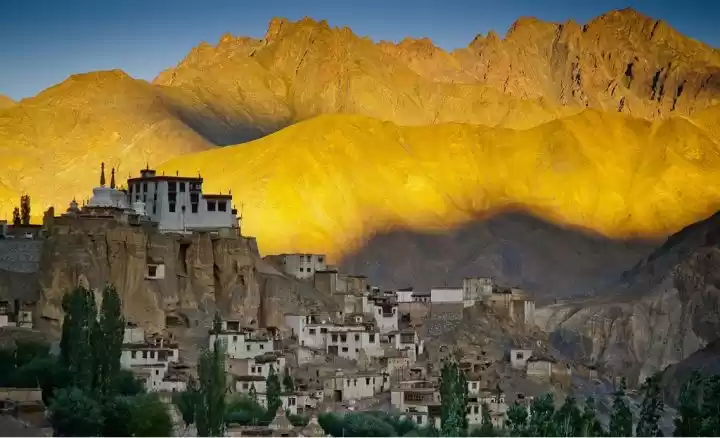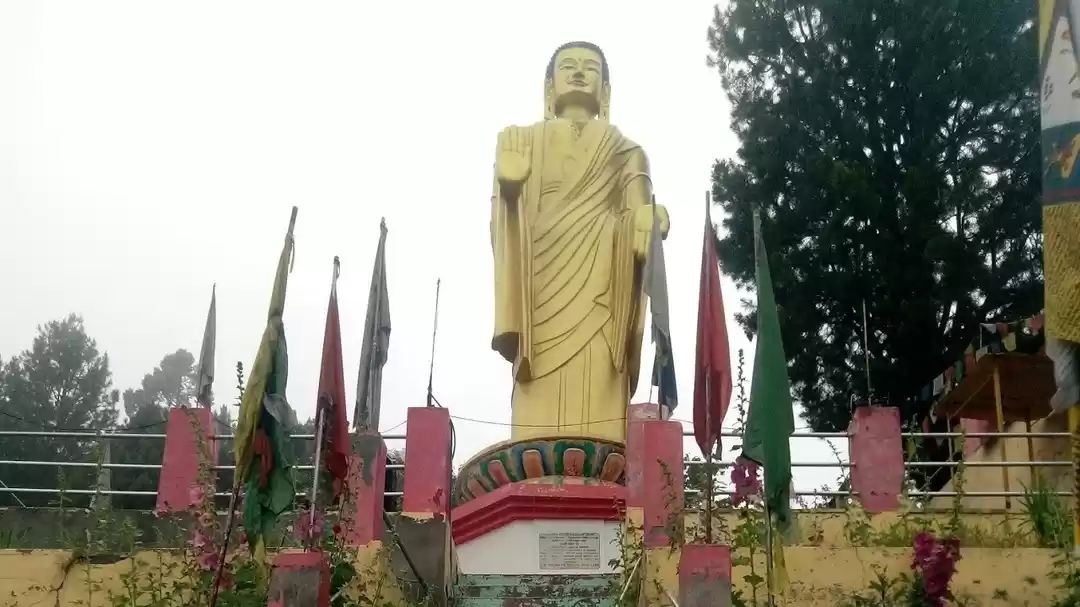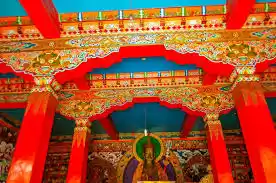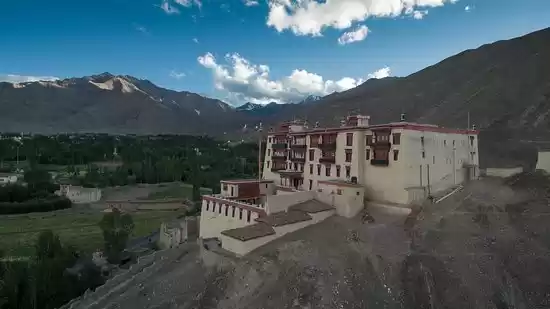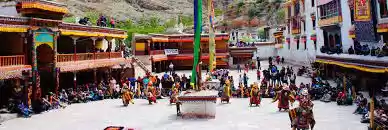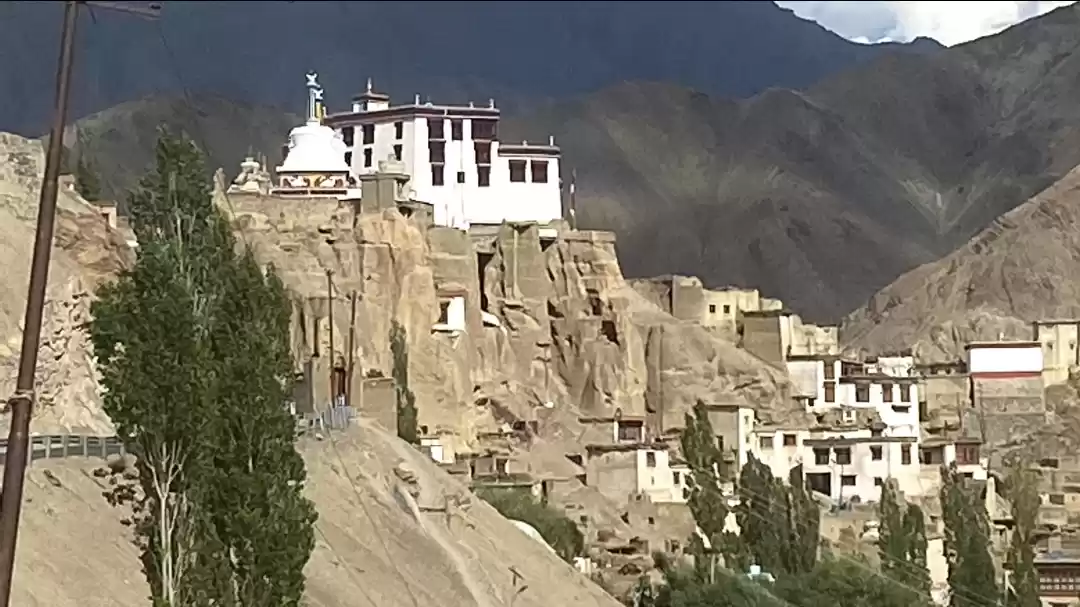Lamayuru Monastery is one of the most ancient and stunning Buddhist monasteries in Ladakh. Perched on a hilltop overlooking a valley of surreal lunar landscape, Lamayuru Monastery is a sight to behold. It is also a place of immense spiritual and historical significance, as it houses ancient relics, scriptures, and statues of Buddha and other deities. Whether you are looking for a serene and peaceful retreat, or an adventurous and thrilling exploration, Lamayuru Monastery has something for everyone.
In this article, we will tell you everything you need to know about Lamayuru Monastery, its history, significance, attractions, activities, and travel guide.

History and Significance of Lamayuru Monastery
Lamayuru Monastery, also known as Yuru Monastery, derives its name from the Tibetan word "lamayuru", which means "eternal" or "unchanging". This is because the monastery is believed to have existed since the beginning of time, and has survived many natural and man-made calamities. According to legend, the valley where Lamayuru Monastery stands was once a lake, until a Buddhist saint named Naropa meditated there and dried up the water, revealing the moonlike landscape. He then founded the monastery and prophesied that it would be the home of the five Buddha families in the future.
Lamayuru Monastery is one of the oldest and largest monasteries in Ladakh, and belongs to the Drikung Kagyu school of Tibetan Buddhism. It was once a center of learning and meditation, where hundreds of monks and scholars studied and practiced the teachings of Buddha. It also preserves some of the most precious and ancient relics and scriptures of Buddhism, such as the 11th-century wall paintings, the 10th-century wooden mask of Mahakala, and the 9th-century statue of Avalokiteshvara. Lamayuru Monastery is also famous for hosting the annual Yuru Kabgyat Festival, a two-day celebration of dance, music, and rituals, where masked monks perform the sacred Cham dance to ward off evil and bring peace and prosperity.
Attractions and Activities in and around Lamayuru Monastery
Lamayuru Monastery is a treasure trove of attractions and features that will awe and inspire you. Here are some of the main attractions and activities that you can enjoy in and around Lamayuru Monastery:
- The main prayer hall: This is the heart and soul of Lamayuru Monastery, where you can witness the monks chanting and praying in front of the statues of Buddha and other deities. The prayer hall is adorned with colorful thangkas, banners, and paintings, depicting various scenes and stories from Buddhism. The prayer hall is open from 6 am to 6 pm, and the entry fee is Rs. 30 per person. You should dress modestly and respectfully, and remove your shoes before entering the prayer hall.
- The meditation cave: This is the place where Naropa, the founder of Lamayuru Monastery, meditated and performed miracles. The cave is located behind the main prayer hall, and is accessible by a narrow staircase. The cave is dark and small, but has a serene and mystical atmosphere. You can see the impression of Naropa's body on the rock, and a small shrine dedicated to him. The meditation cave is open from 6 am to 6 pm, and the entry fee is Rs. 20 per person. You should be quiet and respectful, and avoid taking photos inside the cave.
- The statues of Buddha and other deities: Lamayuru Monastery has a rich collection of statues of Buddha and other deities, made of clay, wood, metal, and stone. Some of the most notable statues are the 9th-century statue of Avalokiteshvara, the bodhisattva of compassion, the 10th-century statue of Vairocana, the primordial Buddha, and the 11th-century statue of Amitabha, the Buddha of infinite light. The statues are located in various halls and shrines within the monastery, and are revered and worshipped by the monks and the devotees. The statues are open from 6 am to 6 pm, and the entry fee is Rs. 30 per person. You should not touch or photograph the statues, and bow your head when you see them.
- The mural paintings: Lamayuru Monastery has some of the oldest and finest mural paintings in Ladakh, dating back to the 11th century. The paintings depict various aspects and events of Buddhism, such as the life of Buddha, the wheel of life, the mandalas, and the deities. The paintings are done in bright and vivid colors, and have a unique and artistic style. The paintings are located on the walls and ceilings of the main prayer hall, the assembly hall, and the meditation cave. The paintings are open from 6 am to 6 pm, and the entry fee is Rs. 30 per person. You should not touch or photograph the paintings, and admire them from a distance.
- The museum: Lamayuru Monastery has a small but interesting museum, where you can see some of the rare and valuable artifacts and objects related to Buddhism and Ladakh. The museum displays items such as the 10th-century wooden mask of Mahakala, the protector deity, the 11th-century wall paintings, the ancient scriptures and manuscripts, the ritual instruments and utensils, and the costumes and masks of the Cham dancers. The museum is located near the main prayer hall, and is open from 6 am to 6 pm. The entry fee is Rs. 50 per person. You should not touch or photograph the items, and read the information boards carefully.
Besides visiting the attractions within Lamayuru Monastery, you can also indulge in some activities and experiences that will make your trip more memorable and enjoyable. Here are some of the things that you can do around Lamayuru Monastery:
- Camping: If you want to spend a night under the stars, surrounded by the moonlike landscape of Lamayuru, you can opt for camping near the monastery. There are several campsites and tents available, where you can rent a tent, a sleeping bag, and a mattress, and enjoy the scenic views and the fresh air. Camping is a great way to experience the nature and culture of Lamayuru, as you can interact with the locals, watch the sunrise and sunset, and listen to the stories and legends of the place. Camping is available from April to October, and the cost is around Rs. 500 to Rs. 1000 per person per night. You should book your campsite in advance, and carry your own food, water, and toiletries.
- Meditation: If you want to relax and rejuvenate your mind, body, and soul, you can join the meditation sessions at Lamayuru Monastery. The meditation sessions are conducted by the monks, who will guide you through the techniques and practices of Buddhist meditation. Meditation is a wonderful way to connect with yourself and the divine, as you can calm your thoughts, emotions, and senses, and attain a state of peace and bliss. Meditation is available throughout the year, and the cost is around Rs. 100 to Rs. 200 per person per session. You should wear comfortable and loose clothes, and follow the instructions of the monks.
- Yoga: If you want to improve your health and wellness, you can practice yoga at Lamayuru Monastery. Yoga is an ancient and holistic system of physical, mental, and spiritual exercises, that can enhance your strength, flexibility, balance, and harmony. Yoga is taught by experienced and certified instructors, who will teach you the postures, breathing, and relaxation techniques of yoga. Yoga is suitable for people of all ages and levels, and can help you cope with stress, anxiety, and fatigue. Yoga is available throughout the year, and the cost is around Rs. 200 to Rs. 300 per person per session. You should wear comfortable and loose clothes, and bring your own yoga mat and towel.
- Trekking: If you want to explore the beauty and diversity of Lamayuru, you can go for trekking in and around the monastery. There are several trekking trails and routes available, ranging from easy to difficult, and from short to long. Trekking is a fun and adventurous way to discover the natural and cultural wonders of Lamayuru, such as the mountains, valleys, rivers, lakes, villages, monasteries, and temples. Trekking is available from April to October, and the cost is around Rs. 500 to Rs. 1000 per person per day. You should hire a guide, porter, and equipment, and carry your own food, water, and medicines.
- Bike ride: If you want to experience the thrill and excitement of riding a bike on the rugged and scenic roads of Lamayuru, you can rent a bike and go for a bike ride around the monastery. There are several bike rental shops and agencies available, where you can rent a bike, helmet, and gloves, and choose your own route and pace. Bike ride is a fast and convenient way to cover the distance and see the sights of Lamayuru, such as the Indus and Zanskar rivers, the Kargil War Memorial, and the Alchi Monastery. Bike ride is available throughout the year, and the cost is around Rs. 1000 to Rs. 2000 per person per day. You should check the condition and fuel of the bike, and follow the traffic rules and signs.
- Photography: If you want to capture the beauty and charm of Lamayuru, you can take your camera and go for photography around the monastery. Lamayuru offers some of the most stunning and spectacular views and scenes for photography, such as the moonlike landscape, the golden monastery, the snow-capped mountains, the blue sky, and the colorful festivals. Photography is a creative and rewarding way to document and share your experience and memories of Lamayuru, and to appreciate the art and culture of the place. Photography is available throughout the year, and the cost is free. You should respect the privacy and sentiments of the monks and the locals, and ask for permission before taking photos of them.
Nearby Attractions and Places to Visit
Lamayuru Monastery is not the only attraction in the area, as there are many other nearby attractions and places to visit that are worth exploring. Here are some of the nearby attractions and places to visit that are within a short distance from Lamayuru Monastery:
- Lamayuru village: Lamayuru village is the quaint and charming village that surrounds the monastery, and is home to the friendly and hospitable locals. Lamayuru village is a great place to experience the authentic and traditional lifestyle and culture of Ladakh, as you can see the mud houses, the farms, the shops, and the schools. You can also interact with the locals, and learn about their history, customs, and beliefs. Lamayuru village is located just below the monastery, and is accessible by foot or by car. The distance is around 1 km, and the time is around 15 minutes. The best time to visit is in the morning or evening, when the village is lively and active.
- Wanla Monastery: Wanla Monastery is another ancient and beautiful Buddhist monastery in Ladakh, and is a branch of Lamayuru Monastery. Wanla Monastery is known for its three-storeyed Avalokiteshvara temple, which has a magnificent statue of the bodhisattva of compassion, and a rare painting of Mahakala. Wanla Monastery is also a popular trekking destination, as it is the starting point of the Lamayuru-Wanla-Alchi trek, which is one of the most scenic and enjoyable treks in Ladakh. Wanla Monastery is located about 15 km from Lamayuru Monastery, and is accessible by car or by trekking. The route is along the Indus river, and offers some amazing views of the valley and the mountains. The best time to visit is from April to October, when the weather is pleasant and the trek is open.
- Alchi Monastery: Alchi Monastery is one of the most unique and remarkable Buddhist monasteries in Ladakh, and is a UNESCO World Heritage Site. Alchi Monastery is famous for its exquisite and intricate wall paintings, which are influenced by the Kashmiri and Indian styles of art, and depict various themes and stories from Buddhism. Alchi Monastery is also known for its four temples, which are dedicated to different aspects and manifestations of Buddha, such as the Sumtsek temple, the Manjushri temple, the Vairocana temple, and the Lotsawa temple. Alchi Monastery is located about 40 km from Lamayuru Monastery, and is accessible by car or by bike. The road is smooth and well-maintained, and passes through some charming villages and orchards. The best time to visit is from May to September, when the paintings are well-preserved and the flowers are in bloom.
- Indus and Zanskar rivers: Indus and Zanskar rivers are two of the most majestic and important rivers in Ladakh, and are the lifelines of the region. Indus and Zanskar rivers are also the sources of adventure and excitement, as they offer some of the best opportunities for rafting, kayaking, and fishing in Ladakh. Rafting and kayaking on the Indus and Zanskar rivers are thrilling and exhilarating experiences, as you can navigate the rapids, waves, and currents, and enjoy the stunning scenery and wildlife along the way. Fishing on the Indus and Zanskar rivers are relaxing and rewarding experiences, as you can catch some of the finest and freshest fish, such as the brown trout, the rainbow trout, and the mahseer. Indus and Zanskar rivers are located about 20 km from Lamayuru Monastery, and are accessible by car or by bike. The route is along the Leh-Srinagar highway, and offers some panoramic views of the rivers and the mountains. The best time to visit is from June to August, when the water level is high and the weather is warm.
- Kargil War Memorial: Kargil War Memorial is a solemn and sacred place, where you can pay your respects and tribute to the brave and martyred soldiers of the Indian Army, who fought and sacrificed their lives in the Kargil War of 1999. Kargil War Memorial is a simple and elegant structure, which has a huge tricolor flag, a sandstone wall with the names of the martyrs, a museum with the photos and memorabilia of the war, and a souvenir shop. Kargil War Memorial is also a place of pride and patriotism, where you can witness the daily flag hoisting and lowering ceremony, and listen to the patriotic songs and speeches. Kargil War Memorial is located about 60 km from Lamayuru Monastery, and is accessible by car or by bike. The road is steep and winding, and passes through some of the most strategic and historic locations of the war, such as the Tiger Hill, the Tololing Hill, and the Dras sector. The best time to visit is from May to October, when the road is clear and the memorial is open.

How to Reach Lamayuru Monastery
Lamayuru Monastery is well-connected and easily accessible from various locations, such as Leh, Srinagar, Manali, and Delhi. Here are some of the different transport options and routes to reach Lamayuru Monastery from these locations:
- From Leh: Leh is the capital and the largest city of Ladakh, and is the nearest and most convenient location to reach Lamayuru Monastery. Leh is about 115 km from Lamayuru Monastery, and the road is smooth and scenic, passing through some of the most famous and beautiful places in Ladakh, such as the Magnetic Hill, the Sangam point, the Gurudwara Pathar Sahib, and the Basgo Monastery. You can reach Lamayuru Monastery from Leh by car, bike, bus, or taxi. The car and bike are the best and fastest options, as you can enjoy the drive and stop at your own convenience. The car and bike rental are available in Leh, and the cost is around Rs. 2000 to Rs. 3000 per day. The bus and taxi are the cheapest and easiest options, as you can save money and hassle. The bus and taxi are available in Leh, and the cost is around Rs. 300 to Rs. 500 per person. The time taken to reach Lamayuru Monastery from Leh is around 2 to 3 hours.
- From Srinagar: Srinagar is the capital and the largest city of Jammu and Kashmir, and is another popular and convenient location to reach Lamayuru Monastery. Srinagar is about 250 km from Lamayuru Monastery, and the road is rough and adventurous, passing through some of the most challenging and spectacular places in Ladakh, such as the Zoji La pass, the Sonamarg valley, the Dras valley, and the Kargil town. You can reach Lamayuru Monastery from Srinagar by car, bike, bus, or taxi. The car and bike are the best and most adventurous options, as you can experience the thrill and excitement of riding on the highest and toughest roads in the world. The car and bike rental are available in Srinagar, and the cost is around Rs. 3000 to Rs. 4000 per day. The bus and taxi are the cheapest and safest options, as you can avoid the risk and trouble of driving on the difficult roads. The bus and taxi are available in Srinagar, and the cost is around Rs. 500 to Rs. 1000 per person. The time taken to reach Lamayuru Monastery from Srinagar is around 6 to 8 hours.
- From Manali: Manali is a famous and beautiful hill station in Himachal Pradesh, and is another popular and convenient location to reach Lamayuru Monastery. Manali is about 450 km from Lamayuru Monastery, and the road is rugged and stunning, passing through some of the most breathtaking and amazing places in Ladakh, such as the Rohtang pass, the Keylong town, the Baralacha La pass, the Sarchu plains, and the Tanglang La pass. You can reach Lamayuru Monastery from Manali by car, bike, bus, or taxi. The car and bike are the best and most enjoyable options, as you can witness the beauty and diversity of the landscape and the climate. The car and bike rental are available in Manali, and the cost is around Rs. 4000 to Rs. 5000 per day. The bus and taxi are the cheapest and comfortable options, as you can relax and enjoy the views. The bus and taxi are available in Manali, and the cost is around Rs. 1000 to Rs. 2000 per person. The time taken to reach Lamayuru Monastery from Manali is around 10 to 12 hours.
- From Delhi: Delhi is the capital and the largest city of India, and is the farthest and most difficult location to reach Lamayuru Monastery. Delhi is about 1000 km from Lamayuru Monastery, and the road is long and tedious, passing through several states and cities, such as Haryana, Punjab, Jammu, Srinagar, and Kargil. You can reach Lamayuru Monastery from Delhi by car, bike, bus, train, or flight. The car and bike are the most adventurous and challenging options, as you can experience the diversity and contrast of India, from the plains to the mountains, from the urban to the rural, and from the modern to the ancient. The car and bike rental are available in Delhi, and the cost is around Rs. 5000 to Rs. 10000 per day. The bus and train are the cheapest and longest options, as you can save money and travel with the locals. The bus and train are available in Delhi, and the cost is around Rs. 2000 to Rs. 4000 per person. The flight is the fastest and easiest option, as you can skip the hassle and reach Leh in a few hours. The flight is available in Delhi, and the cost is around Rs. 10000 to Rs. 20000 per person. The time taken to reach Lamayuru Monastery from Delhi is around 20 to 24 hours by road, and around 2 to 3 hours by flight.
Best Time to Visit Lamayuru Monastery
Lamayuru Monastery is a year-round destination, as it offers different attractions and experiences in different seasons. However, the best time to visit Lamayuru Monastery depends on your preferences and interests, as each season has its own pros and cons. Here are some of the factors that you should consider while choosing the best time to visit Lamayuru Monastery:
- Weather and climate: Lamayuru Monastery has a cold and dry climate, with extreme variations in temperature and precipitation. The summer season (April to June) is the warmest and the wettest season, with temperatures ranging from 15°C to 25°C, and rainfall ranging from 10 mm to 30 mm. The summer season is the best time to visit Lamayuru Monastery if you want to enjoy the pleasant and sunny weather, and see the green and blooming landscape. The winter season (October to March) is the coldest and the driest season, with temperatures ranging from -10°C to 10°C, and rainfall ranging from 0 mm to 10 mm. The winter season is the best time to visit Lamayuru Monastery if you want to experience the snow and the frost, and see the white and frozen landscape. The spring and autumn seasons (March to April and September to October) are the transitional seasons, with moderate and variable weather, and occasional showers and snowfall. The spring and autumn seasons are the best time to visit Lamayuru Monastery if you want to avoid the crowd and the peak season, and see the changing colors and moods of the landscape.
- Festivals and events: Lamayuru Monastery hosts several festivals and events throughout the year, which are the highlights and attractions of the place. The festivals and events showcase the rich and vibrant culture and tradition of Ladakh, and attract thousands of visitors and pilgrims from all over the world. The most famous and important festival of Lamayuru Monastery is the Yuru Kabgyat Festival, which is held in the month of June or July, depending on the lunar calendar. The Yuru Kabgyat Festival is a two-day celebration of dance, music, and rituals, where masked monks perform the sacred Cham dance to ward off evil and bring peace and prosperity. The Yuru Kabgyat Festival is the best time to visit Lamayuru Monastery if you want to witness the spectacle and the spirit of the place, and participate in the festivities and the prayers. Other festivals and events of Lamayuru Monastery include the Losar Festival, which is the Tibetan New Year, celebrated in the month of December or January, the Buddha Purnima, which is the birthday of Buddha, celebrated in the month of April or May, and the Guru Purnima, which is the day of reverence to the teachers and gurus, celebrated in the month of June or July.
- Crowd and cost: Lamayuru Monastery is a popular and crowded destination, especially during the peak season and the festival season. The peak season is from May to September, when the weather is favorable and the road is open. The peak season is the most expensive and the busiest time to visit Lamayuru Monastery, as the demand and the supply of the transport, accommodation, and food are high. The peak season is the best time to visit Lamayuru Monastery if you don't mind the crowd and the cost, and want to enjoy the maximum facilities and services. The off-season is from October to April, when the weather is harsh and the road is closed. The off-season is the cheapest and the quietest time to visit Lamayuru Monastery, as the demand and the supply of the transport, accommodation, and food are low. The off-season is the best time to visit Lamayuru Monastery if you prefer the solitude and the savings, and want to enjoy the minimum facilities and services.
Where to Stay and Eat in Lamayuru
Lamayuru Monastery offers a range of accommodation and food options for the visitors, catering to different tastes and budgets. Here are some of the accommodation and food options that you can choose from in Lamayuru:
- Guest houses: Guest houses are the most common and affordable accommodation option in Lamayuru, as they provide basic and comfortable rooms with attached bathrooms, hot water, and electricity. Guest houses are run by the locals, who are friendly and helpful, and offer home-cooked meals and local delicacies. Some of the guest houses also have a garden, a terrace, or a balcony, where you can relax and enjoy the views. Some of the guest houses in Lamayuru are the Moonland Guest House, the Lamayuru Guest House, and the Zimskhang Guest House. The cost of a guest house is around Rs. 500 to Rs. 1000 per night for a double room, including breakfast.
- Homestays: Homestays are another common and affordable accommodation option in Lamayuru, as they provide simple and cozy rooms with shared bathrooms, cold water, and candles. Homestays are run by the families, who are warm and hospitable, and offer authentic and traditional meals and drinks. Homestays are a great way to experience the culture and lifestyle of Ladakh, as you can interact with the hosts, and learn about their history, customs, and beliefs. Some of the homestays in Lamayuru are the Norbu Homestay, the Tashi Homestay, and the Dorje Homestay. The cost of a homestay is around Rs. 300 to Rs. 500 per night for a double room, including dinner and breakfast.
- Hotels: Hotels are the most luxurious and expensive accommodation option in Lamayuru, as they provide spacious and elegant rooms with attached bathrooms, hot water, and electricity. Hotels are run by the professionals, who are courteous and efficient, and offer continental and Indian meals and snacks. Some of the hotels also have a restaurant, a bar, a lounge, or a spa, where you can indulge and pamper yourself. Some of the hotels in Lamayuru are the Hotel Moonland, the Hotel Lamayuru, and the Hotel Zimskhang. The cost of a hotel is around Rs. 2000 to Rs. 4000 per night for a double room, excluding meals.
Lamayuru Monastery also offers a variety of food options for the visitors, ranging from local to international cuisines. Here are some of the food options that you can try in Lamayuru:
- Local cuisine: Local cuisine is the most delicious and nutritious food option in Lamayuru, as it is made with fresh and organic ingredients, and cooked with traditional methods and spices. Local cuisine consists of dishes such as thukpa, which is a noodle soup with vegetables and meat, momos, which are steamed dumplings with various fillings, skyu, which is a pasta dish with potatoes and carrots, and chutagi, which is a dumpling soup with spinach and cheese. Local cuisine also includes drinks such as butter tea, which is a salty and creamy tea with butter and milk, chang, which is a fermented and alcoholic barley drink, and apricot juice, which is a sweet and refreshing juice made from apricots. You can find local cuisine in the guest houses, homestays, and some restaurants in Lamayuru. The cost of local cuisine is around Rs. 100 to Rs. 200 per person per meal.
- International cuisine: International cuisine is another tasty and popular food option in Lamayuru, as it is made with imported and exotic ingredients, and cooked with modern and fusion techniques and flavors. International cuisine consists of dishes such as pizza, pasta, burger, sandwich, salad, and cake. International cuisine also includes drinks such as coffee, tea, juice, and soda. You can find international cuisine in the hotels and some restaurants in Lamayuru. The cost of international cuisine is around Rs. 200 to Rs. 400 per person per meal.
Conclusion
Lamayuru Monastery is a must-visit destination for anyone who wants to experience the beauty, culture, and spirituality of Ladakh. Lamayuru Monastery is a place where you can explore the ancient and stunning monastery, enjoy the serene and peaceful atmosphere, indulge in the fun and exciting activities, and discover the nearby attractions and places to visit. Lamayuru Monastery is also a place where you can learn about the history and significance of the monastery, witness the festivals and events of the place, and interact with the locals and the monks. Lamayuru Monastery is a place where you can find yourself and the divine, and create unforgettable memories and experiences. If you are planning to visit Ladakh, don’t miss the opportunity to visit Lamayuru Monastery, and see for yourself why it is called the moonland of Ladakh.



